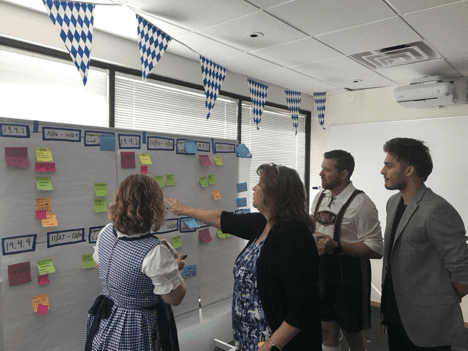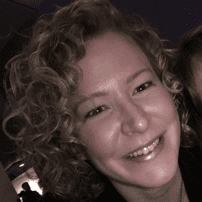
I’m the scrum master for the marketing team at Scaled Agile. In the time that I’ve been here, we went from one team to two, and now three, adding new roles along the way.
What I find most useful in my everyday work are my conflict resolution skills. Communication, vulnerability, working through challenges—these all take a lot of time and effort. Being able to coach it and stick through it with teams on their journey to innovation is where we as scrum masters have a chance to shine.
Conflict isn’t just about fighting and yelling; it’s about collaborating and understanding different perspectives, so that the team can come up with something nobody’s ever thought of before—and Agile is so much of that, too.
In a past life on a team I worked with, there were conflicts between people who had been on the team for a long time and people who were newer, but were very advanced in their skills and fields. Figuring out how to collaborate and how to share those ideas without forcing one path or another was really challenging for a team to achieve agility. When we’re experiencing that and struggling to find our place, we often want to avoid having that hard, one-on-one conversation.
So, I did some one-on-one coaching with the people who were struggling and got them to a point where they understood I didn’t want to step in for them; I wanted them to have the confidence to talk to each other and build trust. I coached both of them on what it means to be vulnerable. It’s actually opening up and showing your team that you’re human and that you can collaborate. They were then able to solve the problem themselves and worked together for a long time afterwards very successfully. They started having those conversations more openly—and not just between the two of them but between the whole team and others they worked with regularly.
I love this article about vulnerability and bringing human connection into the workplace. Just remember to lean into conflicts of all shapes and sizes, and recognize that it’s a journey, much like the team formation lifecycle, that cannot be rushed or avoided.
About Lieschen Gargano Quilling

Lieschen Gargano is an Agile coach and conflict guru—thanks in part to her master’s degree in conflict resolution. As the scrum master for the marketing team at Scaled Agile, Lieschen loves cultivating new ideas and approaches to Agile to keep things fresh and exciting. She also has a passion for developing best practices for happy teams to deliver value in both development and non-technical environments. Fun fact? “I’m the only person I know of who’s been a scrum master and a scrum half on a rugby team.”
Share:
Back to: All Blog Posts
Next: Your Burning Questions: PI Planning





